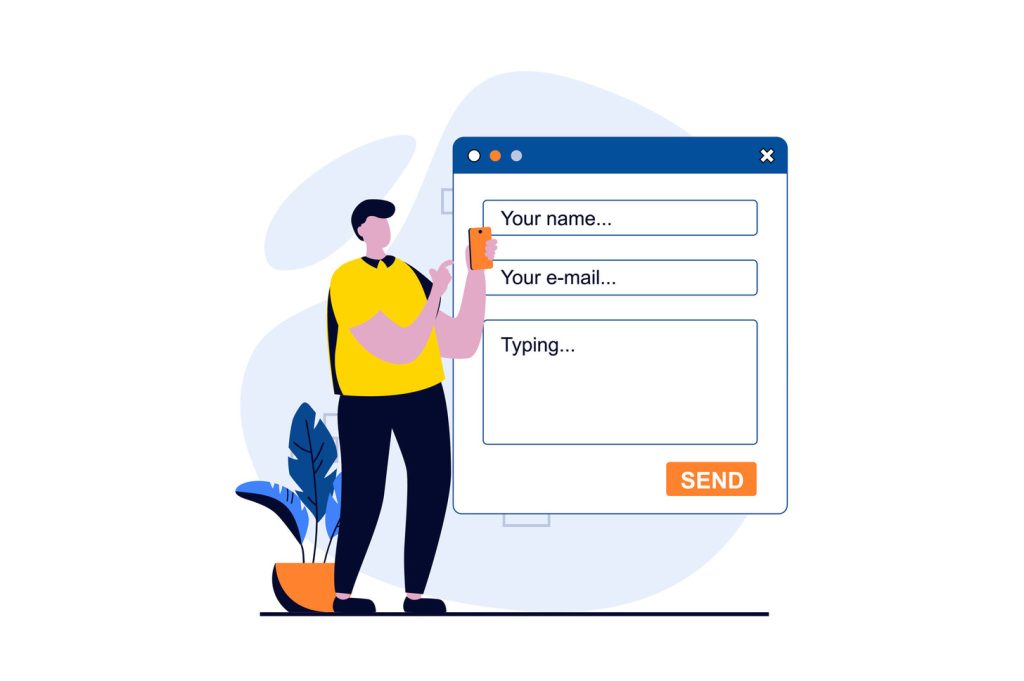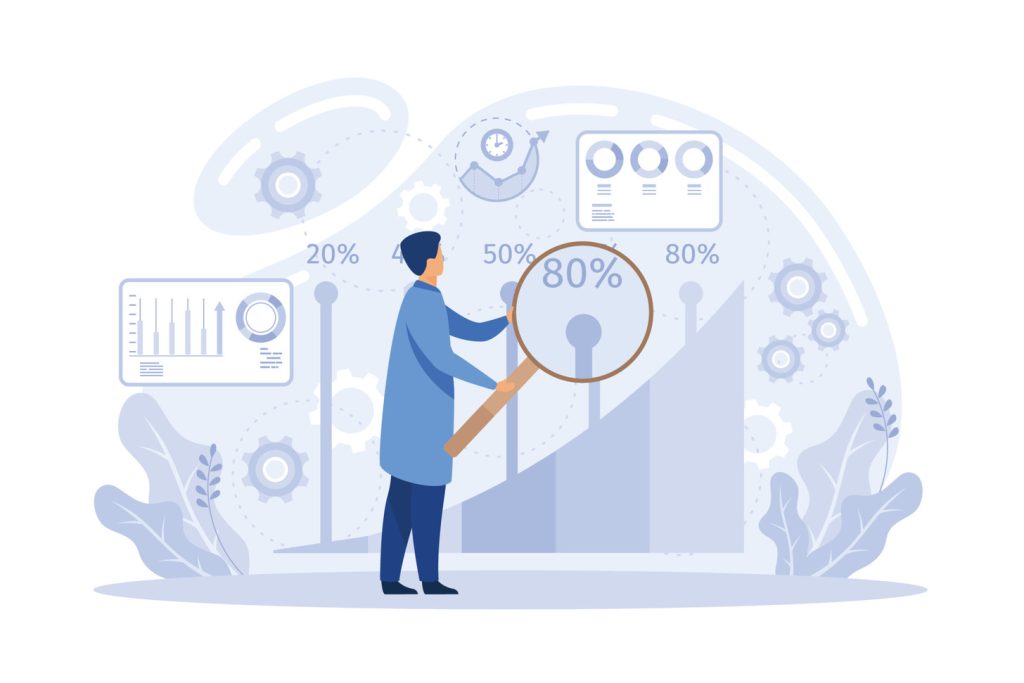Lead Capture Best Practices Guide: Lessons from the Past

Successful businesses have long recognized the power of contact information collection. This process turns casual website visitors into actionable prospects, creating opportunities for relationship-building and revenue growth. Historical data shows companies using structured approaches to gather details like emails or phone numbers achieve 23% higher conversion rates than those relying on passive methods.
Decades of marketing campaigns reveal clear patterns. Organizations that optimized their data-gathering systems reduced bounce rates by up to 40% while improving sales pipeline efficiency. Early adopters of strategic contact forms saw customer acquisition costs drop by an average of 18% within six months.
Three key lessons emerge from historical analysis:
Key Takeaways
- Proven contact collection methods create reliable bridges between visitor interest and sales opportunities
- Businesses using historical best practices outperform competitors in customer retention metrics
- Optimized data-gathering forms increase conversion rates while reducing marketing expenses
- Adaptable systems built on past successes show 35% faster prospect-to-customer transitions
- Companies prioritizing contact information quality achieve greater revenue predictability
Modern strategies build on these foundations. By studying decades of campaign results, businesses can implement time-tested principles that deliver measurable results. The right approach transforms website traffic into lasting customer relationships.
Understanding Lead Capture Fundamentals
In today’s digital marketplace, turning site traffic into tangible opportunities requires proven methods. Systems that gather visitor details effectively bridge the gap between casual browsing and meaningful business relationships. Over 68% of marketers report improved conversion rates when using structured data collection approaches.
What Is Lead Capture?
This process converts anonymous visitors into identifiable prospects by exchanging valuable resources for contact details. Businesses typically use two primary formats:
| Form Type | Key Features | Best Use Cases |
|---|---|---|
| In-Page Forms | Integrated design, minimal fields, seamless UX | Blog posts, service pages |
| Popup Forms | High visibility, timed triggers, strong CTAs | Exit intent, promotional campaigns |
These tools enable companies to build prospect lists while delivering instant value through downloadable guides or exclusive discounts.
Benefits of a Robust Lead Capture System
Organizations using optimized systems achieve three critical advantages:
- 27% lower marketing costs through targeted follow-ups
- 35% faster sales cycles from qualified prospect lists
- Scalable customer databases for personalized outreach
One financial services firm increased monthly conversions by 41% after redesigning their information collection workflow. Strategic implementation creates lasting communication channels that drive measurable growth.
Evolution of Lead Capture Techniques
The transformation of prospect acquisition methods reflects decades of trial and error. Early approaches focused on basic data collection, but modern systems now prioritize strategic engagement. This shift stems from analyzing decades of campaign performance and technological advancements.
Historical Perspectives on Lead Generation
Initial methods relied on static web forms and cold outreach. Businesses later adopted timed popups and multi-page flows to boost participation. By 2010, companies using behavioral triggers saw 48% higher form completion rates than those with generic designs.
| Era | Focus | Tools | Impact |
|---|---|---|---|
| 1990s-2000s | Quantity over quality | Basic HTML forms, cold calling | High volume, low conversion rates |
| 2010s-Present | Strategic targeting | AI-powered forms, multi-channel campaigns | 32% higher lead-to-customer ratios |
Lessons Learned from Past Campaigns
Three critical insights emerged from historical marketing data:
- Multi-channel approaches generate 2.7x more qualified prospects than single-tactic methods
- Campaigns blending psychological principles with technical optimization achieve 41% faster conversions
- Businesses updating their generation strategies yearly maintain 35% higher customer retention
One software company increased sales-ready leads by 57% after adopting historical best practices. These patterns prove that adaptable systems built on proven methods deliver sustainable growth.
Best Practices for Creating a Lead Capture Form

High-performing data collection tools require careful planning and execution. Research indicates well-structured forms convert 47% better than generic designs, balancing information needs with visitor psychology. The most effective solutions combine technical precision with behavioral understanding.
Essential Form Elements for Conversion
Strategic field selection separates successful forms from abandoned ones. Limit requests to 3-5 critical data points while clearly explaining the value exchange. A telecom company increased submissions by 33% after reducing required fields from seven to four.
Compelling headlines and benefit-focused microcopy boost completion rates. Placeholder text should guide users without creating confusion. Always include:
- Visible privacy assurances
- Progress indicators for multi-step flows
- Mobile-optimized input fields
Designing a User-Friendly Interface
Intuitive layouts reduce cognitive load and decision fatigue. Use color contrast to highlight CTAs while maintaining brand consistency. One SaaS provider improved conversions by 28% through simplified navigation patterns.
White space and logical grouping prevent overwhelming visitors. Implement real-time validation to minimize errors. Test different layouts to find the optimal balance between visual appeal and functionality.
Effective Lead Capture Tactics
Mastering prospect acquisition demands precision-tuned methods that align with user intent. Historical campaign data reveals that businesses combining multiple approaches see 62% higher engagement than those relying on isolated tactics. This requires balancing technical execution with behavioral insights.
Implementing Proven Strategies
Timing forms to match visitor activity patterns yields measurable results. A travel booking platform increased submissions by 39% by triggering popups after users viewed three pricing pages. Real-time analytics help identify these high-impact moments.
| Tactic Type | Implementation Window | Conversion Lift |
|---|---|---|
| Scroll-Based Triggers | 2-5 seconds post-engagement | 22% |
| Exit-Intent Overlays | Last 10% of session duration | 41% |
| Personalized CTAs | Contextual page alignment | 33% |
Advanced systems use segmentation to deliver tailored experiences. An e-commerce brand achieved 28% more qualified prospects by customizing form headlines based on referral sources. Continuous A/B testing ensures these tactics adapt to changing user preferences.
Multi-channel integration proves critical. Companies linking their data collection tools to email campaigns and CRM systems report 19% faster sales cycles. This creates closed-loop systems where every visitor interaction feeds future optimization efforts.
Utilizing Irresistible Offers to Increase Conversions

Strategic incentives bridge the gap between visitor hesitation and action. Businesses that design offers addressing specific needs see 53% higher form completion rates than those using generic promotions. This approach transforms casual browsers into engaged prospects through value-driven exchanges.
Crafting Compelling Incentives
Effective offers require deep audience understanding. A fitness app developer boosted sign-ups by 37% after replacing discount codes with personalized workout plans. Key elements include:
- Urgency triggers (“24-hour access”)
- Exclusive educational content
- Risk-reduction trials
Scarcity principles work best when paired with clear benefits. Time-sensitive discounts generate 41% faster responses than open-ended promotions. Always align incentives with customer journey stages – early visitors might prefer guides, while returning users respond better to product demos.
Examples of High-Value Offers
Top-performing incentives combine immediate utility with long-term value perception:
| Offer Type | Conversion Lift | Ideal For |
|---|---|---|
| 15% First-Purchase Discount | 48% | E-commerce |
| Industry-Specific Templates | 33% | B2B Services |
| Free Consultation | 52% | Professional Firms |
Marketing teams using CRM automation tools report 29% better follow-up rates on these offers. Educational webinars prove particularly effective, with 63% of attendees becoming qualified leads within 90 days.
Testing remains critical. A software company discovered checklist downloads outperformed eBooks by 22% in their niche. Continuous optimization ensures offers stay aligned with evolving market demands.
Leveraging Popups and Multi-Step Forms

Strategic engagement tools require precise timing and psychological design. Businesses using these methods see 38% higher interaction rates than traditional approaches. Recent studies show popups and multi-stage forms convert better when aligned with user behavior patterns.
Advantages of Popup Forms
Well-designed popups command attention through smart positioning. Exit-intent technology boosts conversions by 41% by displaying offers when visitors prepare to leave. A retail brand increased subscriptions by 33% using scroll-triggered forms.
Key benefits include:
- Behavior-based customization for different visitor segments
- Real-time response to engagement signals like cursor movements
- Mobile-optimized layouts that maintain 92% functionality across devices
Benefits of Multi-Step Processes
Dividing complex requests into stages reduces form abandonment by 28%. Users completing the first step show 3x higher commitment to finishing subsequent sections. Financial institutions using this method gather 22% more qualified data.
| Form Type | Completion Rate | Data Quality |
|---|---|---|
| Single-Step | 34% | Medium |
| Multi-Step | 62% | High |
Progressive engagement builds trust through gradual information exchange. A SaaS company improved sales-ready leads by 47% using three-step forms with instant value delivery at each stage.
Integrating Privacy Policies for Compliance
Modern businesses face increasing pressure to balance data collection with consumer protection mandates. Over 80 countries enforce privacy laws requiring clear disclosure when gathering personal details like email addresses or contact information. Aligning forms with regulations builds credibility while minimizing legal risks.
Navigating Legal Requirements
Regulations differ by region but share core principles. The GDPR (EU), CAN-SPAM Act (US), and CASL (Canada) all demand transparent explanations of how businesses handle website visitors’ data. Key compliance steps include:
| Region | Regulation | Key Requirement |
|---|---|---|
| European Union | GDPR | Explicit consent for data processing |
| United States | CAN-SPAM | Clear opt-out mechanisms |
| Canada | CASL | Proof of consent retention |
Businesses must disclose storage durations and usage intentions near contact forms. A healthcare provider reduced compliance complaints by 62% after adding retention timelines to their policy.
Enhancing User Trust
Visible privacy assurances increase form completion rates by up to 38%. Effective strategies combine:
- Security badges from recognized auditors
- Third-party testimonials about data handling
- Simplified language explaining rights
One e-commerce brand saw 27% more website visitors share information after displaying a TRUSTe certification. Regular policy updates reflecting legal changes further demonstrate commitment to data protection.
Incorporating Dynamic and Personalized Forms
Adaptive data collection systems reshape how businesses connect with potential customers. Dynamic forms that adjust to individual visitors boost conversion rates by 39% compared to static designs. These intelligent tools analyze user behavior to deliver tailored experiences at scale.
Customizing Forms Based on Audience Data
Sophisticated systems display different fields based on a visitor’s browsing history or demographic profile. A SaaS company increased sign-ups by 28% by showing product-specific questions to users who viewed pricing pages. This approach eliminates irrelevant fields, reducing friction for time-conscious audiences.
Key customization strategies include:
- Auto-populating known details from CRM systems
- Adjusting questions based on referral source
- Displaying industry-specific terminology
Tools for Dynamic Field Implementation
Modern platforms enable non-technical teams to build smart forms through visual editors. These solutions use conditional logic to hide/show fields in real-time. Features like geolocation detection and device recognition further enhance personalized experiences.
| Tool Type | Key Benefit | Impact |
|---|---|---|
| Behavioral Triggers | Adapts questions based on clicks | 22% fewer abandoned forms |
| AI-Powered Fields | Predicts optimal field order | 31% faster completion |
Businesses using these tools report 40% higher data quality from target audience members. The best systems integrate with marketing stacks to maintain consistent messaging across channels.
A/B Testing and Optimization Strategies

Data-driven refinement separates top-performing forms from underperforming ones. Businesses using structured testing protocols achieve 23% higher conversion rates than those relying on intuition. This methodical approach identifies which elements resonate with audiences and drive measurable results.
Testing Different Form Elements
Effective optimization starts with isolating variables. Change one component per test cycle – button colors, headlines, or field orders. A retail brand boosted submissions by 15% simply by switching from green to orange CTA buttons.
| Element Tested | Change Implemented | Conversion Impact |
|---|---|---|
| Button Copy | “Get Started” → “Claim Your Offer” | +90% CTR |
| Headline Length | 12 words → 6 words | +27% Completion |
| Field Order | Email first → Name first | +18% Valid Entries |
Interpreting Conversion Metrics
Focus on statistically significant data with practical relevance. A 5% lift might seem minor, but could translate to 150+ monthly prospects for mid-sized companies. Track these key indicators:
- Completion rate trends across devices
- Abandonment points in multi-step flows
- Quality of collected information
Continuous testing cycles compound improvements over time. One SaaS company increased form effectiveness by 62% through quarterly optimization sprints. Pair quantitative data with user surveys to understand why changes perform differently.
Case Studies and Real-World Examples

Industry leaders continue proving that strategic design drives measurable outcomes. Concrete examples show how combining psychological triggers with technical precision creates conversion breakthroughs.
Success Stories from Industry Leaders
Obvi’s weekly giveaway campaign demonstrates simplicity’s power. Their bright pink forms requesting only email and phone fields achieved 62% conversion rates. Native Deodorant boosted demo requests by 41% using countdown timers that created urgency without overwhelming users.
Key Takeaways from Campaigns
Earthlove Box’s serum offer illustrates the “FREE Gift” principle in action. By pairing clear value propositions with minimal data requests, they increased qualified contacts by 33% quarterly. Ecommerce Influence’s podcast-access newsletter campaign shows targeted incentives outperform generic discounts.
These marketing initiatives share common success factors: precise audience alignment, frictionless interfaces, and instant value delivery. Businesses replicating these strategies report 28% faster prospect conversion cycles while maintaining compliance standards.

